
Asus began their Transformer Pad series a couple of years ago with the TF101. It was my first foray into the tablet world. In the end I sold it and bought a Nexus 7 (2012) after finding that the 10.1in form-factor was too big for my use-case at the time. The docking station/keyboard that came with it was used once in 4 months. It wasn’t that I didn’t like the tablet. I just didn’t think that the keyboard would be much use it to. Fast forward two years and when the opportunity to try out their newest version of the Transformer Pad came up I jumped at the chance.
How is this Transformer Pad different to all the others? It’s the first Android offering to use a 64bit Intel CPU. Will this make a difference to the user? Who is the user Asus are aiming for with yet another Transformer Pad (we reviewed the TF701 in May of this year)? Does this Transformer succeed with its objectives? Read on to find out.
- Compact
- Keyboard easy to type on
- USB OTG
- Full size USB port in keyboard
- Solid build
- Thick tablet
- Needs hard button navigation buttons
- Android
- No Auto Brightness
Hardware
The Asus Transformer Pad TF103C packs a quad core Intel Bay Trail Atom Z3745 processor clocked at 1.33GHz with a burst speed of up to 1.86 GHz. While not the highest speed CPU around it is a different architecture to the usual Snapdragon processors we see in mobile devices these days the processor/device didn’t miss a beat. Not sure if that is a good thing or bad thing but in everyday use and gaming I saw no issues at all with running the usual CPU and GPU intensive games such as Asphalt and Riptide GP. With a battery life that was very close to the 9.5 hours stated by Asus there doesn’t seem to be any downside to this processor. Sure, the clock speeds aren’t as high as a high end phone such as the LG G3 but, and maybe due to the Intel Bay Trail processor, there was no degradation in the performance at performing any actions. The processor is one of the first 64-bit processors to be used in an Android device and although not much use just yet, come the end of the year and the release of Android L it may be handy to have (assuming Asus update it to Android L when it is available).
The Transformer Pad TF103C has only 1GB of RAM so may struggle if you try to do too much multi-tasking but for my use-case, it performed admirably. I was using it for basic browsing on Chrome with maybe half a dozen tabs open, also having Tapatalk app running. I didn’t really push it to its limits, which can be a good thing in that I was unable to hit it’s limits meaning that in most everyday cases you will not hit it’s limit. Makes you wonder whether the 3GB of RAM we are starting to see in devices (LG G3, OnePlus One etc) is really necessary.
A disappointing feature about the TF103C is the small amount of storage. At 16GB it limits the usefulness of the device. After the Asus ROM there is under 11GB available to the user. When you install a couple of the high-end games at a few gig each the 11GB disappears very quickly. There is an SD slot for expandable storage of up to 64GB but games are unable to be installed on the SD card thus making it only useful for storing documents, music, movies etc. It astounds me that manufacturers are still releasing devices with such small amounts of storage. We know that it doesn’t add that much cost to the device- OnePlus even stated that 64GB cost them the same as 32GB would have!
Design
Together the tablet and keyboard dock are solid and feel sturdy as if they could handle the portable nature they are designed for. Together they are not thin, but the other dimensions are a nice size for a portable laptop. Personally I’m not a fan of 10.1in tablets but I loved the size of it when using it as a laptop replacement. The review unit we received was white but it also comes in a black colour if that is what you prefer.
The tablet itself is not a bad looking piece of hardware. It is just thick. Similar to the 2013 Nexus (also made by Asus) the Transformer pad also has the camera and stereo speakers on the rear of the tablet. There is also a distinct lack of a flash to take decent pictures but personally I think the less we encourage people to use 10.1in tablets to take photos the better.
On the inferior edge (when docked) of the tablet you will find the keyboard dock connectors which also feel solid and not flimsy at all, which is obviously a requirement for a portable tablet/keyboard dock combo. The top of the tablet (when docked) holds the power button only with the headphone jack on the right side. The volume rocker, microSD slot and the microUSB charging port are on the left hand side of the device. All of the buttons are easily reached and easily pressed, but not too easily that result in accidental presses.
The keyboard is a standard keyboard as seems to be included with all Asus Transformer Pads. I found the keyboard to be a pleasure to type on, with the keys giving a nice soft response when tapped. I am used to a laptop/chromebook that is 11.6in so it wasn’t a great stretch to switch to a 10.1in screen. My main issue with the keyboard dock is the lack of shortcut keys and the inaccessibility of those they do have. The keyboard had a home button which is positioned next to the space bar, easily accessible although there was a search button between it and the space bar. The right hand side of the space bar has a menu button and the back button was all the way in the top left corner (usually the esc key), definitely not accessible. There was a glaring absence of a recents/multi-tasking button. I say glaring because I often went to use it but then realised to do it I’d have to use the button on the screen. To me it makes sense for Asus to include the standard Android buttons as easily accessed buttons on the keyboard, all next to each other, possibly separate from the keyboard between the trackpad and the keys.
The trackpad had minimal multi touch gestures but the usual gestures were absent, most likely due to an Android deficiancy in the OS. Android is not built to be used as a desktop OS.
The dock has the dimensions of 257.46 x 178.4 x 9.9 mm and weighs 550gm. Add the tablet doubles the thickness to 19.8mm, which is about the thickness of my Acer C720P. The Acer is a lot more useful when it comes to productive work (not playing PVZ2 etc) but is slightly wider. I feel that Asus should have tried to make it a bit thinner but that may not have been possible due to the circuitry required in the tablet for the keyboard dock to work.
Screen
The 10.1in LED 1280 x 800 pixel IPS screen on the Transformer Pad is good while not being a standout. It is not a screen that “wows” you when you see it for the first time but it is also not a screen that makes you wish you had bought something else. It looks good enough for all games and media I threw at it. The resolution is not the highest around for a 10.1in tablet but it means that less power is required to run the screen resulting in a longer battery life, something everyone wants from their devices. The lower resolution of the screen is definitely noticeable on a high resolution game such as Asphalt 8 and was disappointing when compared to gaming on the Nexus 7 and Nexus 10.
Battery life
The battery life of the Transformer Pad was great. Asus state is should get 9.5 hours out of the Li-Polymer Battery which is good for a laptop replacement. Asus would have been able to extend battery life even more with the addition of a battery in the keyboard dock but I was far from disappointed with the battery life as it was. I can easily see this getting through a full day of work, and if it doesn’t the handy microUSB charging port makes it easy to charge any time, anywhere. Everyone has spare microUSB chargers lying around or a portable charger that could come in handy if required.
Camera
The Asus website really pumps up the camera telling all and sundry how amazing it is:
ASUS Transformer Pad has a 2-megapixel rear-facing camera that lets you take astounding images; as well as a 0.3-megapixel front-facing camera for clear video chats.
I am not sure where they are getting these “astounding images” from but it certainly could not be the camera on the Transformer Pad. The pictures were average at best but that really should be expected for a 2MP rear camera. Video chat was not a great experience either with a 0.3MP camera just not good enough to cut it these days. I am fairly sure my old candy-bar Sony-Ericsson had a 0.3MP camera over 10 years ago. The camera produced average to good pictures in good light conditions but in low light it was near useless. 10.1in tablets should not be used to take photos in my opinion so I don’t think the lack of a decent rear camera is a great issue. The lack of a decent front camera is an issue as video hangouts/skype etc are all very popular these days, especially if you are considering using this for work purposes and video conferencing is your thing.
Connectivity
The Transformer Pad includes all the standard connections associated with WLAN802.11 a/b/g/n, Bluetooth V4.0 and support for Miracast. Nothing special but nothing major missing. There aren’t NFC capabilities available but once again the uses for that in a tablet is limited at the moment.
I had no issues connecting to my Wireless-N router and the bluetooth connected to any headphones I tried on it. This is expected these days and a device with issues with either of these should be considered dead in the water before it is even released in my opinion.
Sound
Asus have continued with their placement of the speakers ala Nexus 7 2013- stereo speakers at opposite ends on the back of the device. These speakers are similar to that on the Nexus 7 in that they are good but not great. Not sure why you would need great speakers on a portable tablet/laptop but they are good enough for games and to listen to music but don’t expect to get a super loud audiophile experience. I was happy with the speakers in this tablet. The sound produced while playing games was good enough to enhance the experience. It wouldn’t make me buy the device just for them but it certainly didn’t turn me off the device. They are good enough for what they are designed to do.
Software
The software is where this device both excels and disappoints. When using the Transformer as a tablet, without the keyboard docked, the experience is one that is fluid and pleasant. Android is designed to be used as a touch operating system and Asus have done nothing to detract from this experience. They have effectively not burdened the OS with overbearing gimmicks or other useless lag-producing apps/features.
When docked is where the software on this device is not at it’s best. Android as a desktop OS is not the best experience. I am not sure why anyone would choose this given a choice. The keyboard lacked the hard keys that may have helped the experience but assuming that people dock the tablet with the expectation of it becoming a workhorse. Google have done a lot of work on their productivity apps such as Drive, Docs, and Sheets, etc lately but even then they are very limited when compared with what is offered with other desktop operating systems.
Android OS
The Transformer Pad is equipped with Android 4.4.2 and thus comes with all the goodies included in KitKat at that stage. Of interest is that it is unknown whether all the security patches involved with 4.4.3 and 4.4.4 have been patched to the system. Something to keep in mind if you are a security conscious individual if you are looking to purchase this. The version of Android isn’t the issue I have with this device. Android is the wrong OS to have on a laptop replacement. It is not the workhorse or netbook replacement they want it to be.
Skins
As far as I can remember Asus have had a very minimal skin on their devices. Their devices are usually basic stock Google Android with their own theme on top (and sometimes not even that). Asus attempt to set themselves apart from other manufacturers by not installing a vast skin, not a heap of gimmick apps embedded in a custom framework that does nothing but slow the device down. They individualise their devices by installing apps of their own design and manufacture that have a specific purpose. The apps do not run when you do not want them to. They do not take up an exorbitant amount of on-board storage. They just run when you want them to.
Asus do have a name for their UI, ZenUI, but it is so minimal that I am not sure it needs a name. Asus have stated that they have made over 1000 changes to stock Android but in that I think they counted every single icon they have changed as there doesn’t seem to be that many changes. They have made simple, elegant changes to the Android system and should be applauded for their work on their UI. I found the UI to be a pleasant experience to use.
Bundled Apps
Asus have bundled quite a few apps into the OS of the Transformer Pad, most of their own making. The apps Asus have included have been designed well, in keeping with the Android design guidelines Google provide for developers. Obviously they will soon be out of date come Android version L and the Material design guidelines but they are really well done. The apps not only look good but function well and are actually very useful.
My favourite app was the app called “Story”. It is just like the Google+ Photos’ Autoawesome story book mode. With it you can insert your own pictures and comments into pages to make your own story book. For someone with young kids it is very useful and I’d imagine if you were someone who went on long holidays etc it would also come in very handy.
The apps Asus include are:
|
|
|
The Way Forward
If you’ve ever used Android as a laptop OS you will know that it just isn’t right. It isn’t that it can’t be used, it’s more that there is a much easier and more elegant solution just next door. ChromeOS. ChromeOS is designed to be used as a desktop OS. Although there have been some recent additions into the ChromeOS code to enhance the touch capabilities it is still lacking in that sense. So how does that help when the tablet is detached from the keyboard? It doesn’t. Why not have a dual booting device that dual boots ChromeOS and Android. ChromeOS for when it is docked and Android for when used as specifically as a tablet.
We have seen dual booting Windows and Android devices, which both Microsoft and Google are not happy with, but we are yet to see a device booting both of Google’s operating systems. We have seen that the devices have components in common with Samsung’s Exynos processor being used for both Chromebooks and Android devices and we know that both operating systems have kernels based on the Linux kernel so why are we yet to see a device booting Android and ChromeOS? The Tranformer Pad TF103C has an Intel Atom processor and we know that this processor can run ChromeOS so it seems like a simple solution to a perfect device is within reach.
I am sure someone at the GooglePlex must have a reason and if you can think of one please let me know. A 10.1in dockable tablet running both Android and ChromeOS would make a perfect work/play device in my opinion.
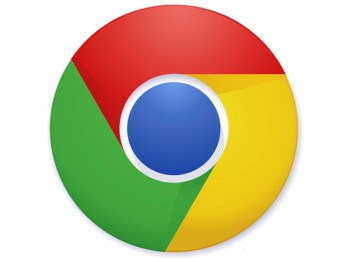
Asus Transformer Pad TF103C
- 10.1″ 1280 x 800 pixel IPS Display
- Intel® Atom™ Z3745 Quad-Core, 1.33 GHz, up to 1.86 GHz, 64bit
- 1GB RAM
- 16GB storage (Expandable with microSD)
- 5GB Life Time ASUS Webstorage Space
- 2MP rear, 0.3MP front camera
- Bluetooth 4.0, Wi-Fi 802.11 a/b/g/n, dual-band
- Internal GPS antenna + GLONASS Digital Compass
- Stereo Speakers
- Android 4.4.2 with ZenUI
- 9.5 hours,19Wh Li-Polymer Battery
- 257.46 x 178.4 x 9.9mm (Without dock)
- 257.46 x 178.4 x 19.8mm (With dock)
- 550gm without dock, 1100gm with dock
Focussing on the Asus Transformer Pad TF103C rather than the entire concept of an Android laptop replacement is difficult. The actual Transformer Pad is a decent device. It doesn’t set the world alight with it’s specifications but under real world conditions the Intel Atom processor is a good solid performer. Although the Pad only has 1GB of RAM there was no issue running the operating system, nor any of the apps on it.
The build is solid and when docked on the keyboard was a great combination for portability although maybe the thickness could be worked on a bit. I don’t know the mechanics of what is required to be added to a standard tablet to make it be able to function as a dockable screen so maybe this is not possible. The keyboard itself was nice to type on with the keys giving a nice soft feedback. If Asus plab to stick with the Android OS on the docked tablet then they could probably add the standard Android navigation buttons to the keyboard in an easily accessible location to improve the experience.
If you want an Android tablet that works well with a minimal overlay or skin and also a keyboard that could help send emails etc then this could be the device for you. If you want it as a standard laptop replacement then I think the concept itself is lacking. The perfect use case would be if going on holidays and you wanted something to be easily able to type emails to friends and track all your photos etc and also a decent tablet to use as a media device for media consumption.
Asus are positioning the Transformer Pad TF103C at the lower end of the market at around the $400 mark, which although there are cheaper options for a tablet there isn’t much for the tablet/keyboard combo. While more expensive than many Chromebooks it does have the added advantage of an extremely usable tablet for media or gaming. The TF103C is a decent device at a decent price and as long as you are not expecting it to be a replacement for your laptop, you knows it limitations and it still fits within your use-case then it could be a great purchase for you.


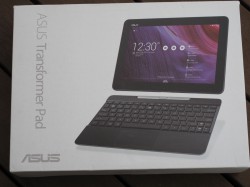
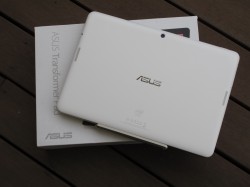

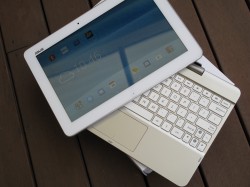

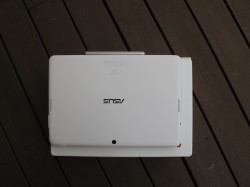
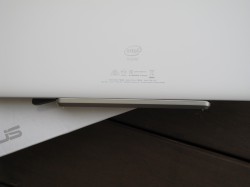

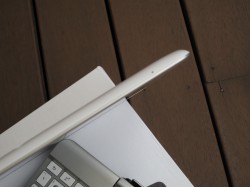
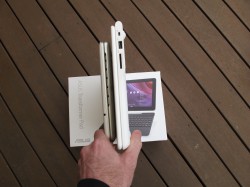

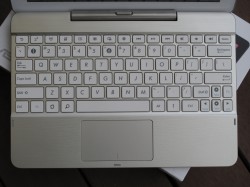

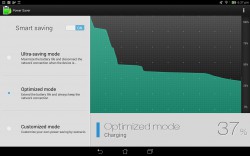
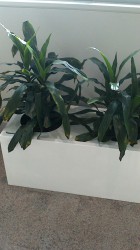
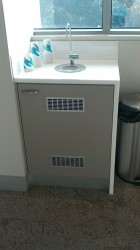




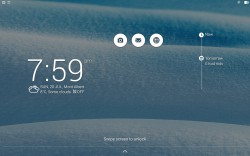
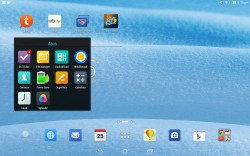
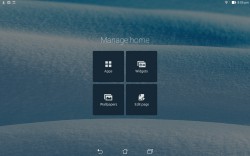
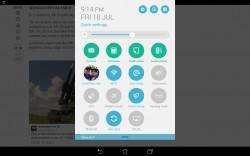
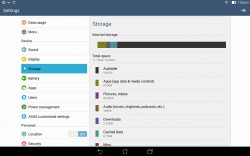
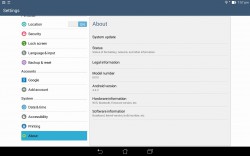
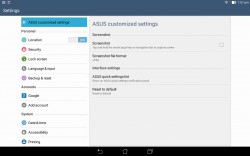
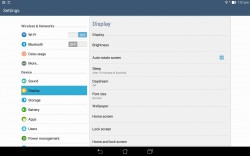
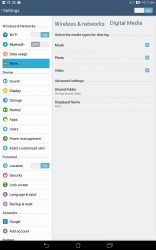
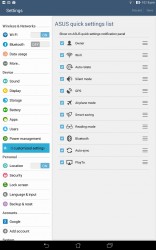
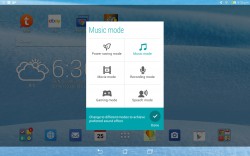
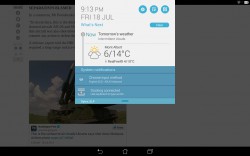
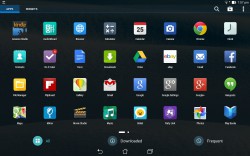

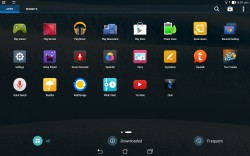




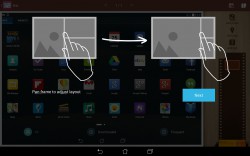



nice review! bought mine yesterday with dock… and set it up with a 64GB microsd card. the 1GB RAM seems fine.. but it may slow down here and there but nothing serious.. its expected.. tho im not very happy with the battery life. i think is to short. the offical value is 9.5 hours? in stand by? under witch conditions does it last 9.5hours? mine is with luck some 8h or below. with major use like web browsing or gaming with max bright on screen of course. and i am sure kit kat os has also some fault in the… Read more »
Nice review, I bought one a few weeks ago, and probably a bit too quickly. You’ve summed it up pretty well. I keep thinking a chromebook would be better. If only acer australia brought the i3 720. The screen resolution is fine. The lack of multitasking button is a dissapointment. Overall it is better than just a tablet. More solid than a tablet plus a bluetooth keyboard, but not a laptop replacement.
I too have a TF101. Spec wise besides the quad core CPU and that it has 4.4.2 KitKat, this tablet is not much of an upgrade from the TF101 which is now over 3 years old.
Wish the screen resolution and ram was higher, then I’d consider this a worthy replacement for the TF101.
Still on my tf01also and fully agree with your statement. Is this tf103c missing a battery in the dock or did i miss something….
No battery in the dock apparently… Someone can correct me but I looked for it but couldn’t see it nor any mention of it anywhere